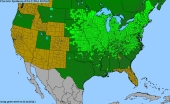
 3
3




Mandrake...takes on and holds the influence
of the devil more than other herbs because of its similarity
to a human. Whence, also, a person’s desires, whether good
or evil, are stirred up through it...
-Hildegard of Bingen, Physica
 4
4




 3
3















Xisca - pics! Dry subtropical Mediterranean - My project
However loud I tell it, this is never a truth, only my experience...
 5
5




Xisca Nicolas wrote:I am more sceptic about rentability of making clothes than food at home...
How much do we need to invest in equipment if we buy it all?
If this does not have use all year long because we are not professional, that is a lot of equipment on earth that serves little....







 2
2




Mandrake...takes on and holds the influence
of the devil more than other herbs because of its similarity
to a human. Whence, also, a person’s desires, whether good
or evil, are stirred up through it...
-Hildegard of Bingen, Physica

 6
6




![Filename: flax-hackles.jpg
Description: Comb the straw, if desired, to capture seed pods. I already threshed this straw by alternate means before it was retted. [Thumbnail for flax-hackles.jpg]](/t/107862/a/75158/thumb-flax-hackles.jpg)
 1
1




Mandrake...takes on and holds the influence
of the devil more than other herbs because of its similarity
to a human. Whence, also, a person’s desires, whether good
or evil, are stirred up through it...
-Hildegard of Bingen, Physica
 3
3











 4
4




Mandrake...takes on and holds the influence
of the devil more than other herbs because of its similarity
to a human. Whence, also, a person’s desires, whether good
or evil, are stirred up through it...
-Hildegard of Bingen, Physica




Country oriented nerd with primary interests in alternate energy in particular solar. Dabble in gardening, trees, cob, soil building and a host of others.




C. Letellier wrote:Other than back to basics is there some reason for going to thorns?
I would have thought that something like horse shoe nails would have been the modern answer?
Mandrake...takes on and holds the influence
of the devil more than other herbs because of its similarity
to a human. Whence, also, a person’s desires, whether good
or evil, are stirred up through it...
-Hildegard of Bingen, Physica
 2
2











 2
2




r ranson wrote:Thorns should work for the first passes. A florist frog is nice for the final pass if one wants fine fibre.
Mandrake...takes on and holds the influence
of the devil more than other herbs because of its similarity
to a human. Whence, also, a person’s desires, whether good
or evil, are stirred up through it...
-Hildegard of Bingen, Physica

|
Police line, do not cross. Well, this tiny ad can go through:
Rocket Mass Heater Resources Wiki
https://permies.com/w/rmh-resources
|






